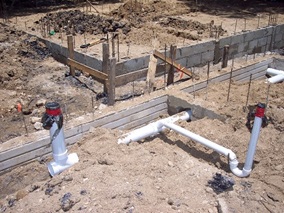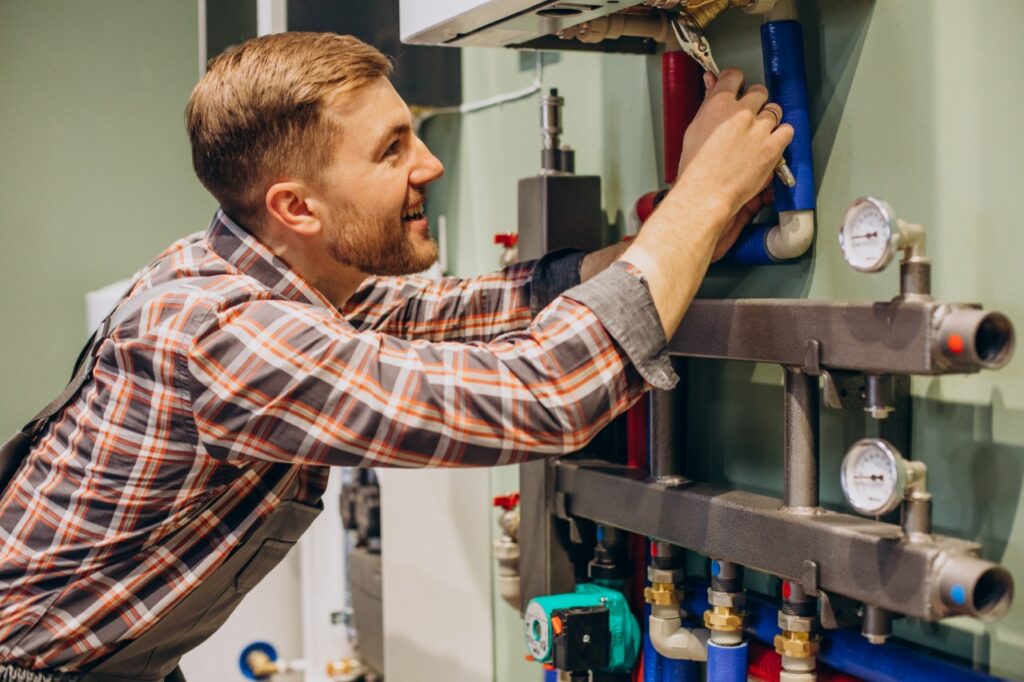Everything You Need to Know to Your Home's Plumbing System Anatomy
Everything You Need to Know to Your Home's Plumbing System Anatomy
Blog Article
Do you find yourself in search of ideas on Anatomy of a House: Understanding the Components?

Recognizing how your home's plumbing system functions is essential for each property owner. From providing tidy water for alcohol consumption, cooking, and bathing to safely eliminating wastewater, a properly maintained pipes system is critical for your family members's health and wellness and convenience. In this comprehensive guide, we'll explore the intricate network that makes up your home's pipes and offer suggestions on upkeep, upgrades, and handling common problems.
Intro
Your home's pipes system is greater than just a network of pipes; it's a complex system that ensures you have access to tidy water and reliable wastewater elimination. Knowing its components and exactly how they collaborate can assist you stop pricey repairs and ensure everything runs smoothly.
Fundamental Parts of a Pipes System
Pipes and Tubing
At the heart of your plumbing system are the pipelines and tubes that carry water throughout your home. These can be made of different products such as copper, PVC, or PEX, each with its benefits in terms of toughness and cost-effectiveness.
Components: Sinks, Toilets, Showers, and so on.
Components like sinks, bathrooms, showers, and bathtubs are where water is used in your home. Understanding just how these components attach to the pipes system helps in diagnosing issues and preparing upgrades.
Shutoffs and Shut-off Factors
Shutoffs control the flow of water in your plumbing system. Shut-off valves are vital throughout emergency situations or when you require to make repair services, allowing you to separate parts of the system without interrupting water flow to the whole house.
Water System System
Key Water Line
The primary water line connects your home to the municipal water supply or an exclusive well. It's where water enters your home and is dispersed to different fixtures.
Water Meter and Pressure Regulatory Authority
The water meter procedures your water usage, while a pressure regulatory authority guarantees that water streams at a safe stress throughout your home's plumbing system, preventing damages to pipes and fixtures.
Cold Water vs. Hot Water Lines
Comprehending the distinction between cold water lines, which provide water directly from the primary, and hot water lines, which bring warmed water from the hot water heater, assists in troubleshooting and preparing for upgrades.
Drain System
Drain Piping and Traps
Drain pipes bring wastewater far from sinks, showers, and toilets to the sewage system or sewage-disposal tank. Traps protect against sewage system gases from entering your home and likewise catch debris that could trigger clogs.
Air flow Pipelines
Ventilation pipes enable air right into the drain system, preventing suction that can reduce water drainage and trigger catches to empty. Proper air flow is vital for maintaining the stability of your plumbing system.
Value of Proper Water Drainage
Guaranteeing correct drainage stops backups and water damages. Routinely cleansing drains and preserving catches can avoid pricey repair work and expand the life of your plumbing system.
Water Heating Unit
Sorts Of Water Heaters
Water heaters can be tankless or typical tank-style. Tankless heating units warmth water on demand, while storage tanks keep warmed water for immediate use.
Upgrading Your Pipes System
Reasons for Upgrading
Upgrading to water-efficient fixtures or changing old pipelines can boost water quality, decrease water expenses, and raise the value of your home.
Modern Plumbing Technologies and Their Benefits
Check out innovations like clever leak detectors, water-saving toilets, and energy-efficient hot water heater that can conserve cash and reduce ecological influence.
Price Considerations and ROI
Determine the in advance prices versus long-lasting savings when taking into consideration pipes upgrades. Numerous upgrades pay for themselves via minimized energy costs and fewer repairs.
How Water Heaters Link to the Plumbing System
Comprehending exactly how hot water heater connect to both the cold water supply and hot water distribution lines helps in diagnosing issues like insufficient warm water or leaks.
Maintenance Tips for Water Heaters
On a regular basis purging your water heater to remove sediment, examining the temperature setups, and inspecting for leakages can expand its life expectancy and improve power effectiveness.
Usual Pipes Concerns
Leakages and Their Causes
Leakages can take place because of maturing pipes, loosened fittings, or high water pressure. Addressing leaks quickly prevents water damages and mold and mildew development.
Blockages and Obstructions
Clogs in drains and commodes are usually brought on by purging non-flushable things or an accumulation of grease and hair. Using drainpipe displays and being mindful of what goes down your drains pipes can protect against blockages.
Signs of Pipes Issues to Look For
Low water stress, sluggish drains pipes, foul odors, or abnormally high water expenses are signs of possible plumbing issues that should be resolved without delay.
Pipes Maintenance Tips
Normal Assessments and Checks
Schedule yearly plumbing inspections to catch concerns early. Try to find signs of leakages, rust, or mineral buildup in faucets and showerheads.
Do It Yourself Maintenance Tasks
Simple tasks like cleaning tap aerators, checking for commode leaks making use of color tablets, or shielding subjected pipes in chilly climates can avoid significant plumbing concerns.
When to Call an Expert Plumbing
Know when a pipes problem calls for expert expertise. Attempting intricate repair services without proper understanding can cause more damage and greater repair costs.
Tips for Minimizing Water Usage
Simple routines like taking care of leaks without delay, taking shorter showers, and running full loads of washing and meals can conserve water and reduced your energy expenses.
Eco-Friendly Pipes Options
Take into consideration sustainable plumbing products like bamboo for floor covering, which is durable and environmentally friendly, or recycled glass for kitchen counters.
Emergency situation Preparedness
Actions to Take Throughout a Plumbing Emergency
Know where your shut-off valves lie and just how to turn off the supply of water in case of a ruptured pipe or major leakage.
Relevance of Having Emergency Contacts Helpful
Maintain contact information for local plumbing professionals or emergency services readily available for quick action throughout a pipes situation.
Ecological Effect and Conservation
Water-Saving Fixtures and Home Appliances
Installing low-flow taps, showerheads, and toilets can considerably decrease water usage without compromising efficiency.
Do It Yourself Emergency Fixes (When Relevant).
Short-term solutions like utilizing air duct tape to spot a leaking pipeline or putting a container under a leaking faucet can reduce damage up until a professional plumbing shows up.
Conclusion.
Understanding the anatomy of your home's pipes system encourages you to maintain it successfully, conserving time and money on repair work. By following regular upkeep regimens and remaining notified regarding contemporary plumbing modern technologies, you can guarantee your plumbing system operates efficiently for several years ahead.
HOW YOUR PLUMBING SYSTEM WORKS
Which Pipes Do What?
Blue lines = fresh water supply entering the building Red lines = hot water supply entering the building Grey lines = pipes carrying waste away from the building and venting pipes carrying gases away from the building (through the roof) YOUR MAIN PLUMBING SYSTEMS
There are two main plumbing systems that support your home s basic plumbing needs one that brings clean water into your home, and one that sends dirty water away from your home. Connected to the toilet, bath, shower, and other faucets in your home, these two systems keep your water flowing in the right directions.
ACCESSING FRESH WATER
Fresh and clean water is brought into your home through the main water supply line . Filtered through one pipe, this water is pressured to flow into the various fixtures in your home at any given time.
This water can be sourced from a well located on your property, a pond or river (mostly cottages), or, as in most cases, from the city s municipal water treatment centre. However, it is important to note that water that is untreated, such as the water siphoned from ponds or rivers, may not be safe to drink. Personal water supplies always need to be treated for hardness and contaminants before consumed.
MUNICIPAL WATER SUPPLIES
Improve taste and odour Remove sediment Eliminate hardness Reduce chlorine COLD WATER SUPPLY VS. HOT WATER SUPPLY
Cold water flows into your home or building through the service line, which then distributes hot or cold water to your fixtures. This line is most commonly run through a central column that runs floor to floor. Hot water runs in short and straight pipes as the longer the pipeline, the more heat that will be lost in the transfer. Having shorter pipes also allows residents to access hot water more quickly.
WASTE WATER SYSTEM
Your wastewater system is divided into two parts pipes that send wastewater away from your home and venting pipes that send sewer gas away from your home. Sewage water travels through pipes that flush the water and waste towards local sewers that are operated and managed by your city or town. Most sewer systems rely on gravity to move the wastewater to where it needs to go.
The further away from your toilet or sink, the larger wastewater pipes become. This allows for waste to be disposed of from various parts of your home or business at once without pipe blockages. The angle and flow of these pipes are also essential for keeping your waste pipes clear of build up.
https://harrisplumbing.ca/how-your-home-plumbing-system-works/

Hopefully you enjoyed our piece on Anatomy of a House: Understanding the Components. Thank you for finding the time to read through our blog. Appreciated our entry? Please quickly share it. Help somebody else locate it. Thanks a bunch for your time. Kindly visit our blog back soon.
Make An Appointment Report this page